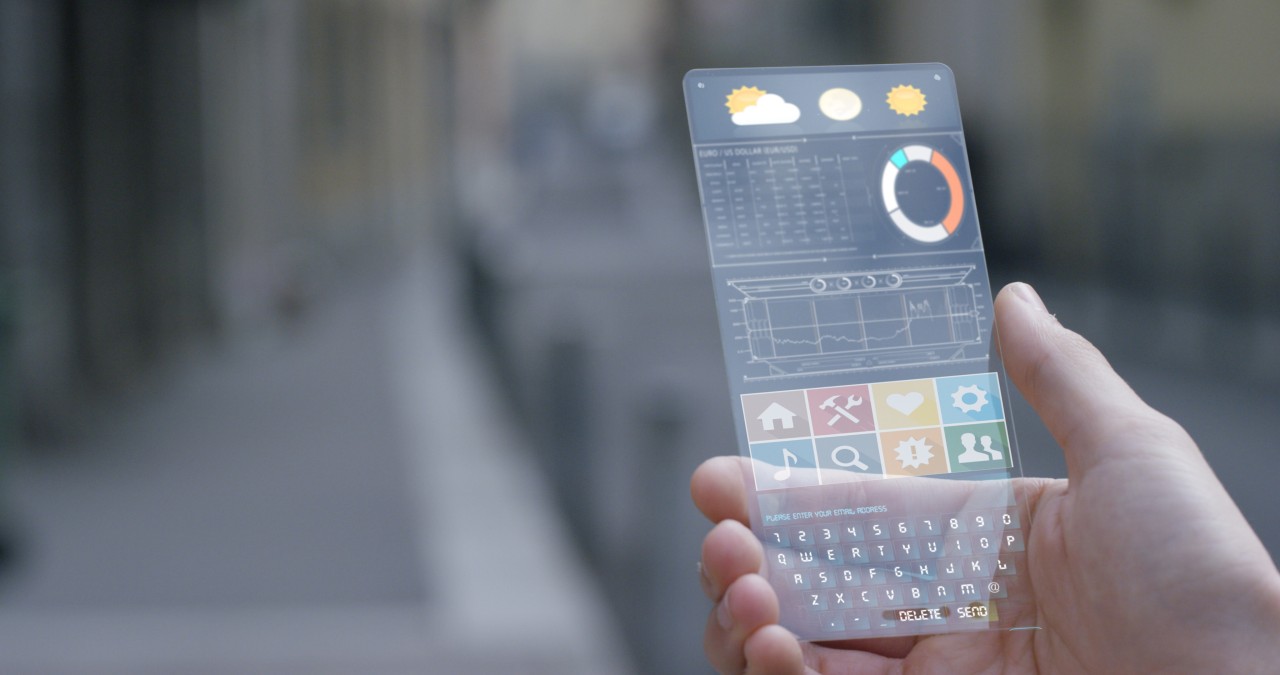For more than a decade, the smartphone has ruled as the centerpiece of modern life. It’s the tool we reach for when we wake up, the device we use to work, socialize, shop, navigate, and even entertain ourselves. Yet, as powerful as smartphones have become, cracks are beginning to show in their dominance. Sales have plateaued in many regions, and innovation cycles feel incremental rather than revolutionary. In response, tech giants envision a future beyond smartphones, investing staggering sums—over $150 billion collectively—into emerging technologies that promise to define the next era of digital interaction.
By 2032, the leaders of the tech industry—Apple, Google, Microsoft, Meta, Samsung, and others—expect that augmented reality glasses, wearable interfaces, AI-driven systems, and even brain-computer technologies will begin to replace the smartphone as our primary gateway to the digital world. But what does this future look like, and why are companies so determined to move beyond the device that has defined the 21st century so far?
Why the Smartphone Era is Reaching Its Peak
The smartphone isn’t going away overnight. In fact, it remains one of the most profitable product categories ever created. However, several signals suggest its dominance is slowly fading.
- Market Saturation: Most people in developed markets already own a smartphone. Growth is limited mainly to replacement cycles, which are lengthening as devices last longer.
- Incremental Upgrades: Recent models offer faster processors and better cameras, but these changes no longer feel groundbreaking. Consumers aren’t rushing to upgrade every year as they once did.
- Form Factor Limitations: The rectangular slab of glass and metal hasn’t fundamentally changed in more than a decade. Expanding screens, folding displays, or higher refresh rates don’t transform how we interact with technology.
- Shift Toward Experiences: Users want immersive, seamless, and context-aware technology. Smartphones, while powerful, are still limited by their 2D displays and reliance on touch.
Recognizing these trends, tech giants envision future beyond smartphones as a strategic necessity rather than a luxury experiment.
Augmented Reality Glasses: The Leading Contender
Among all emerging technologies, augmented reality (AR) glasses are the strongest candidate to succeed smartphones as the primary computing interface.
- Apple has invested heavily in AR, with rumors of lightweight AR glasses designed to eventually replace the iPhone. Tim Cook has publicly described AR as a “profound technology” comparable to the smartphone’s impact.
- Meta (formerly Facebook) has rebranded itself entirely around the concept of the “metaverse,” where AR and VR headsets enable new social and professional interactions.
- Google, after its early experiments with Google Glass, has quietly returned to AR development, acquiring companies and building new prototypes.
- Microsoft continues to refine its HoloLens platform, initially targeted at enterprises, but laying groundwork for consumer adoption.
The idea is simple but ambitious: instead of pulling a phone out of your pocket, users will wear glasses that seamlessly overlay information onto the real world—navigation directions floating in front of you, translations appearing in real time, notifications displayed without looking down.
Wearables and Beyond
Beyond AR glasses, other wearable devices are being developed as part of this smartphone replacement ecosystem.
- Smartwatches: Already a complement to phones, watches may gain independence with faster processors, cellular connectivity, and advanced sensors.
- Earbuds: Voice-controlled wireless earbuds, like Apple’s AirPods or Samsung’s Galaxy Buds, are evolving into AI-powered assistants capable of contextual conversations.
- Haptics: Wristbands or gloves equipped with sensors could provide tactile feedback, enabling users to interact with virtual environments as naturally as physical ones.
The vision is a distributed network of wearables working together—glasses, watches, earbuds—each playing a role in delivering a seamless digital experience without relying on a single device.
AI-Driven Systems as the New Interface
If AR glasses and wearables represent the hardware of the future, artificial intelligence (AI) represents the software brain.
Tech giants envision a world where AI assistants replace apps as the main way we interact with digital tools. Instead of opening a calendar app, you might ask your AI assistant to “schedule a meeting with John next Thursday.” Instead of browsing shopping apps, you’d simply describe what you need and the AI would handle the rest.
- Google has been pushing this vision with Google Assistant and Duplex.
- Amazon continues to expand Alexa into homes, cars, and wearables.
- Apple is working to overhaul Siri into a smarter, more proactive AI.
- OpenAI and Microsoft are collaborating on generative AI that could become the backbone of personal digital companions.
In this context, the smartphone’s app-centric model starts to feel outdated. AI doesn’t need a grid of icons; it needs ears, eyes, and context—a role better suited to glasses, earbuds, and ambient devices.
Brain-Computer Interfaces: The Long-Term Bet
While AR and AI may dominate the next decade, companies are also experimenting with even more radical ideas. Brain-computer interfaces (BCIs) aim to connect humans directly to digital systems, bypassing traditional input devices.
- Neuralink, Elon Musk’s startup, has already demonstrated progress in connecting brain signals to external devices.
- Meta has quietly invested in neural interface research, seeing it as a potential future input method for AR.
- DARPA and other government research agencies have long studied BCIs for medical and military applications.
Though still experimental, these technologies suggest a future where we may not need to speak, type, or swipe at all. Our thoughts could become the primary interface.
Economic Stakes: Why $150 Billion is on the Line
The investments tech giants are making aren’t just about innovation—they’re about survival. The company that controls the post-smartphone era could enjoy dominance similar to Apple’s during the iPhone boom.
- Apple revolutionized personal tech with the iPhone, but its future growth depends on finding the “next iPhone.”
- Meta sees AR and VR as existential; if social interaction shifts to immersive environments, it cannot afford to be left behind.
- Google thrives on information access, and AR provides new ways to embed search and ads directly into daily life.
- Samsung and Microsoft view hardware and enterprise ecosystems as opportunities to shape this future.
Together, these companies are pouring over $150 billion into research, acquisitions, and product development for this transition. The stakes could not be higher.
Challenges on the Road Ahead
Of course, the shift beyond smartphones won’t be easy. Several major challenges stand in the way:
- Hardware Limitations: AR glasses need to be lightweight, stylish, and power-efficient. Today’s models are still bulky and expensive.
- Privacy Concerns: Always-on cameras and microphones raise ethical questions. Who controls the data these devices collect?
- User Adoption: People are deeply attached to their phones. Convincing them to abandon a device that feels like an extension of themselves won’t happen overnight.
- Cost Barriers: High prices could limit adoption, at least in the early years.
- Infrastructure Needs: AR and AI require ultra-fast connectivity, meaning 5G and beyond must be reliable and widespread.
History is filled with promising technologies that failed because they arrived too early or lacked consumer trust. Tech giants must overcome these obstacles if their vision is to succeed.
What the Future Might Look Like by 2032
If tech giants are right, the world of 2032 may look very different:
- Instead of checking a smartphone, you’ll slip on lightweight glasses every morning that overlay digital information onto the real world.
- You’ll speak naturally to an AI assistant through your earbuds, which will handle tasks across work, shopping, and entertainment.
- Smartwatches and wearables will monitor your health continuously, alerting doctors before problems escalate.
- For early adopters, even thought-controlled interfaces may become available, letting you type or navigate without moving a muscle.
In this future, technology becomes invisible but ever-present—integrated into daily life in a way smartphones never fully achieved.
Conclusion
For more than 15 years, the smartphone has been the undisputed king of personal technology. But as innovation slows and limitations become clearer, the biggest names in tech are preparing for a shift. Tech giants envision future beyond smartphones by investing in AR glasses, wearables, AI-driven assistants, and even brain-computer interfaces. Together, they’ve committed more than $150 billion to shaping the next era of digital interaction.
The transition won’t happen overnight. Challenges in hardware, privacy, and adoption remain significant. But history suggests that once the right combination of technology and consumer readiness aligns, change can be rapid and irreversible—just as the iPhone reshaped the world in 2007.
By 2032, the smartphone may still exist, but it may no longer sit at the center of our digital universe. Instead, we may look back on it as the bridge between the age of portable screens and the dawn of immersive, AI-powered living.
The question isn’t whether the future beyond smartphones is coming—it’s simply who will lead us there.





